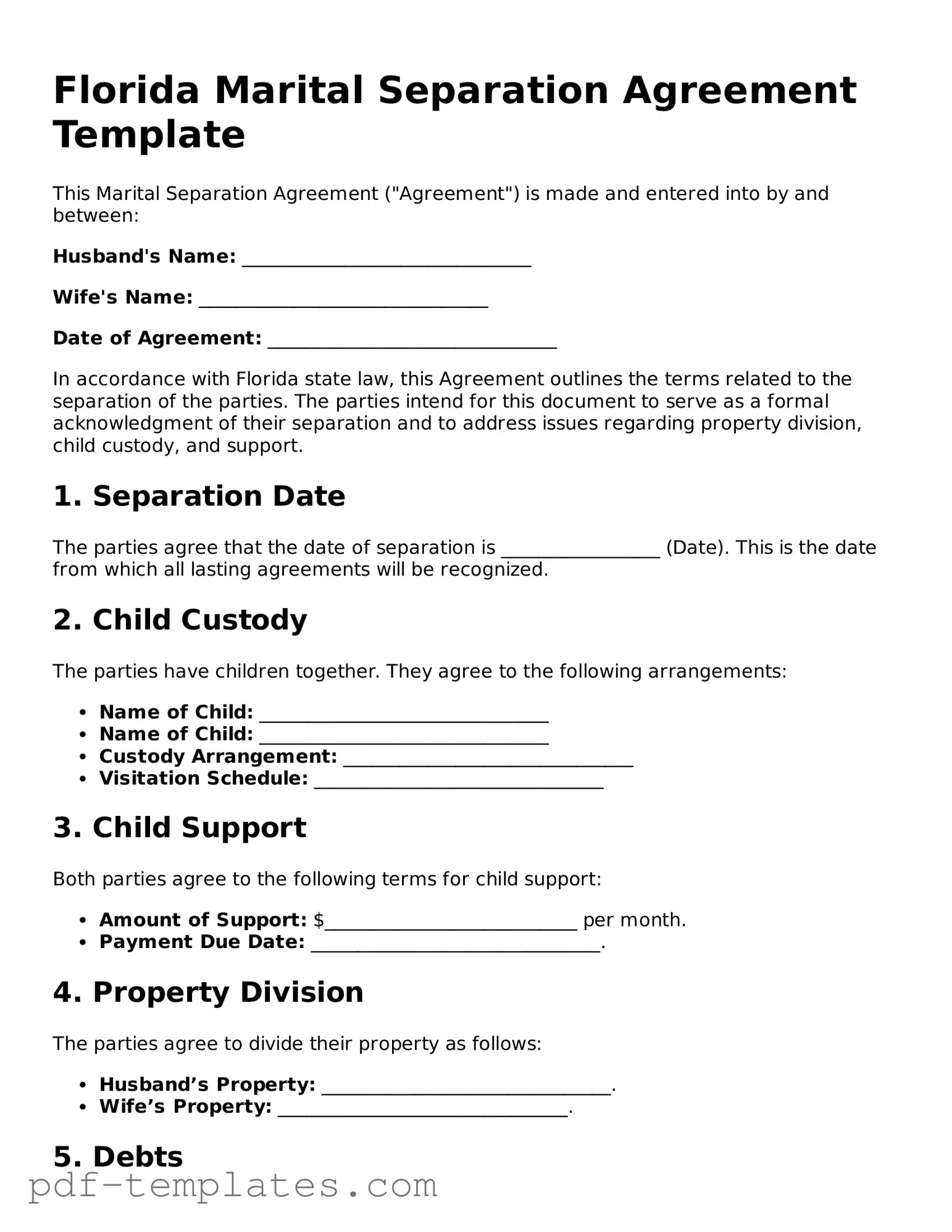The Florida Marital Separation Agreement is similar to a Divorce Settlement Agreement. Both documents outline the terms of asset division, child custody, and support obligations. While a Marital Separation Agreement is used when couples decide to live apart but not legally divorce, a Divorce Settlement Agreement is finalized during the divorce process. Each document aims to provide clarity and structure to the couple's new living arrangements and responsibilities.
Another related document is the Child Custody Agreement. This agreement specifically focuses on the arrangements for the care and custody of children following separation or divorce. While the Marital Separation Agreement may include child custody provisions, the Child Custody Agreement is dedicated solely to this aspect, detailing visitation schedules and parental responsibilities. This ensures that both parents are on the same page regarding their children's welfare.
Understanding the various legal documents involved in relationships and separations is essential; for instance, the Request for Authorization for Medical Treatment (DWC Form RFA) serves a significant purpose in the context of workplace injuries. It is crucial for employees to know their rights and the proper procedures in such scenarios. Effective management of these documents can prevent misunderstandings and provide clarity. For more information on additional forms that may be applicable, refer to All California Forms.
The Parenting Plan is also similar in nature. It is a comprehensive document that outlines how parents will raise their children after separation or divorce. While the Parenting Plan often accompanies the Marital Separation Agreement, it provides more detailed guidance on parenting time, decision-making authority, and communication between parents. This helps to minimize conflict and promotes a cooperative parenting relationship.
The Property Settlement Agreement is another document that shares similarities. This agreement specifically addresses the division of marital property and debts. While the Marital Separation Agreement may include property division, the Property Settlement Agreement focuses exclusively on this topic, ensuring that both parties understand their rights and obligations regarding their assets and liabilities.
A Cohabitation Agreement may also be relevant. This document is used when couples choose to live together without marrying. Similar to a Marital Separation Agreement, it outlines the rights and responsibilities of each partner, including financial matters and property ownership. It serves to protect both parties in the event of a separation, much like the Marital Separation Agreement does for married couples.
The Non-Marital Separation Agreement is another comparable document. This agreement is used when couples who are not married decide to separate. It serves a similar purpose to the Marital Separation Agreement, addressing issues like asset division and child custody. Both documents aim to create a clear understanding of each party's rights and responsibilities, regardless of marital status.
The Prenuptial Agreement can also be seen as related. This document is created before marriage to outline the division of assets and financial responsibilities in the event of a divorce or separation. While it is established prior to marriage, its purpose aligns with the Marital Separation Agreement in providing clarity and protection for both parties regarding their financial interests.
Finally, the Separation Agreement in general terms can be compared. This document is used in various jurisdictions and serves to formalize the terms of separation between spouses. Like the Florida Marital Separation Agreement, it addresses issues such as support, custody, and property division. The primary goal of both documents is to provide a clear framework for the couple's new circumstances, helping to reduce potential conflicts in the future.
